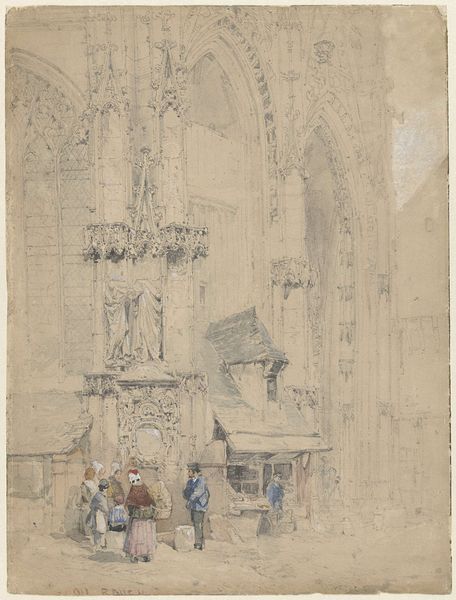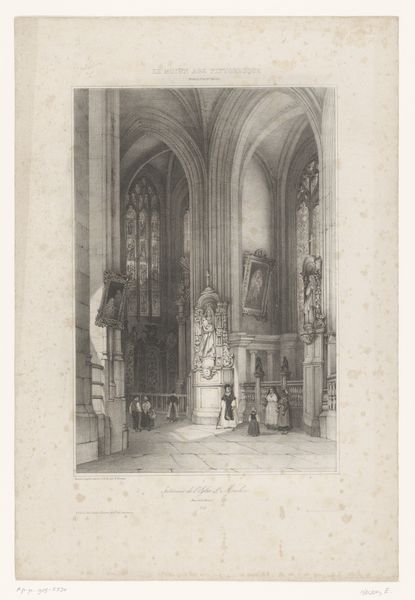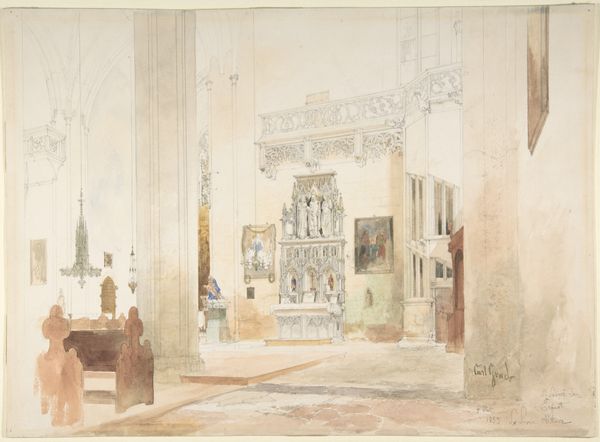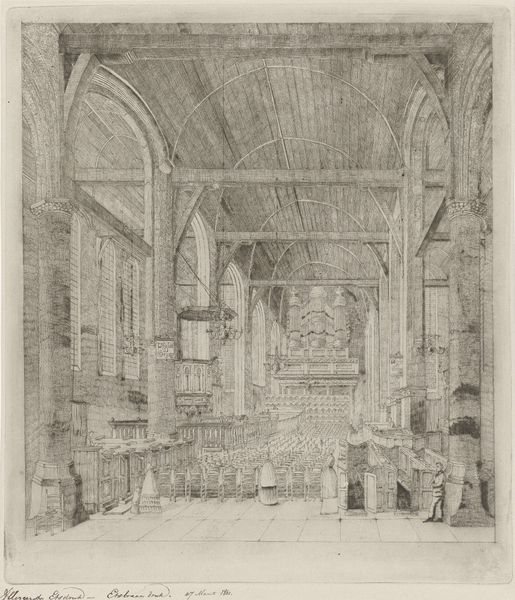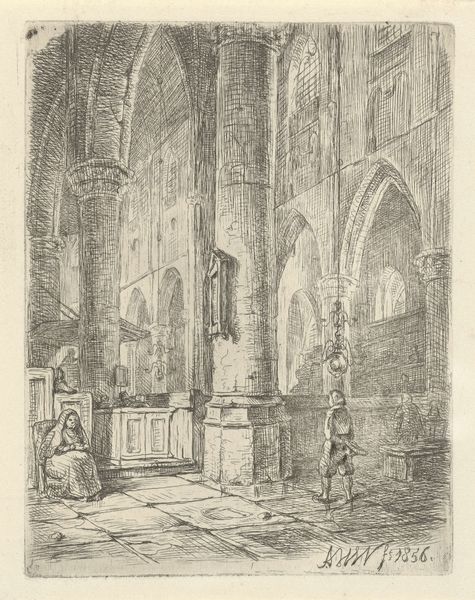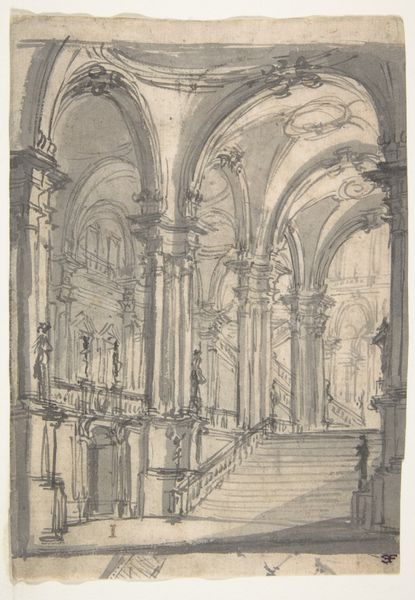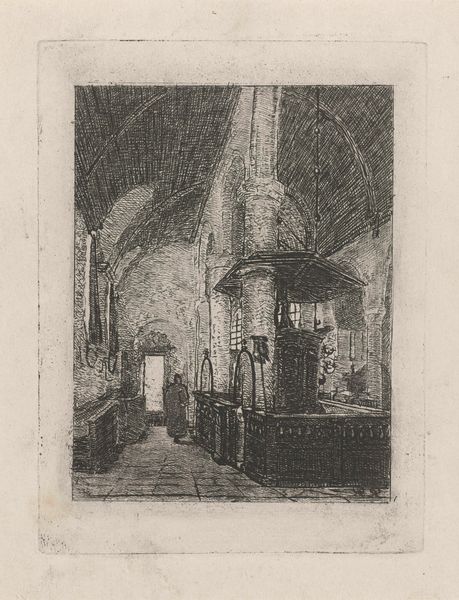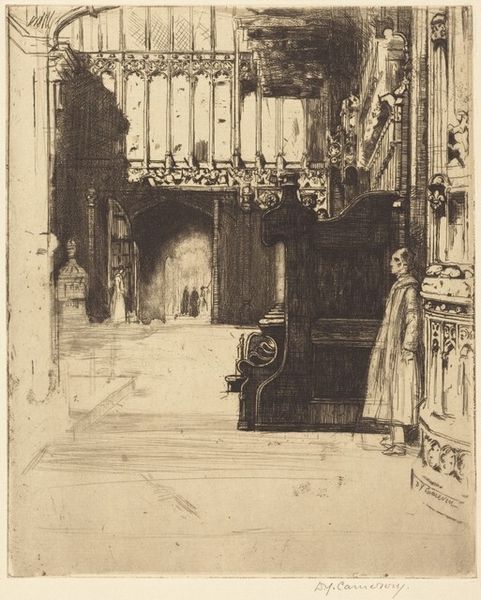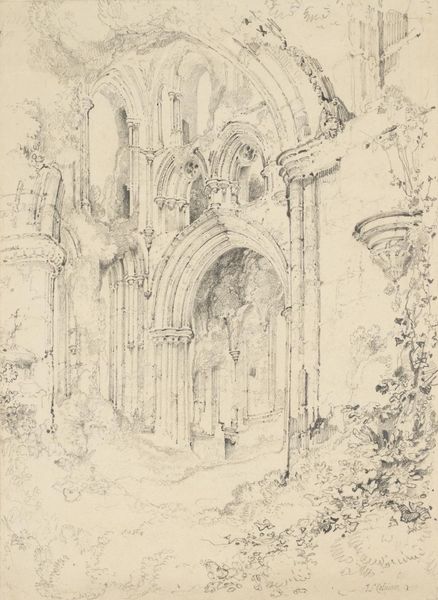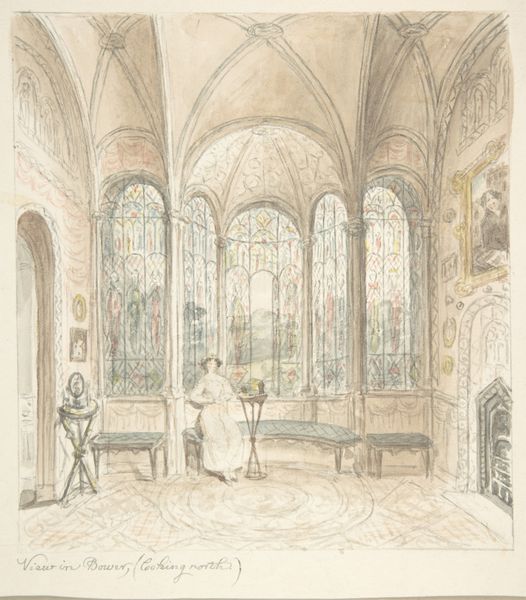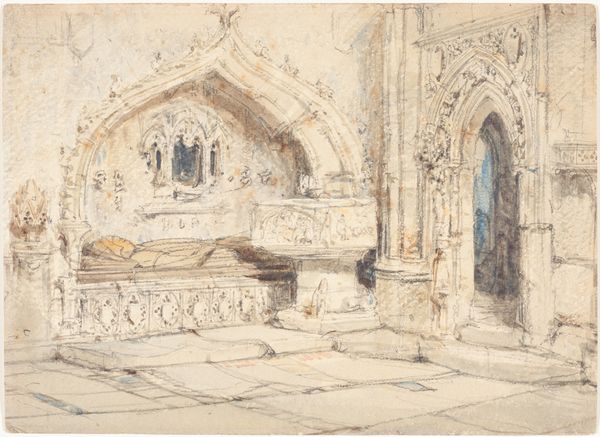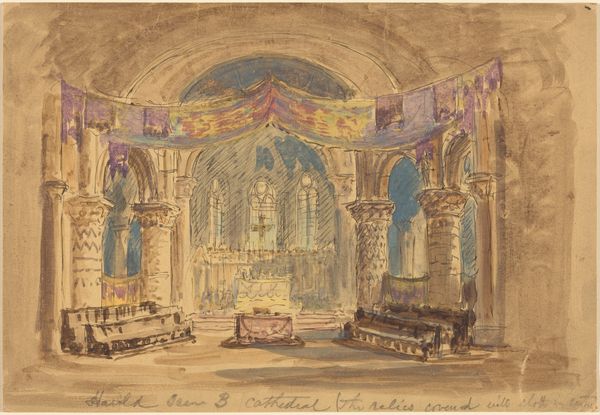
Design for a Stage Set at the Opéra, Paris: Church Interior 1830 - 1890
0:00
0:00
drawing, coloured-pencil, print, watercolor
#
drawing
#
coloured-pencil
# print
#
watercolor
#
coloured pencil
#
cityscape
#
watercolour illustration
#
history-painting
#
mixed medium
Dimensions: sheet: 10 3/16 x 4 3/4 in. (25.8 x 12.1 cm)
Copyright: Public Domain
Editor: Here we have Eugène Cicéri's "Design for a Stage Set at the Opéra, Paris: Church Interior," made sometime between 1830 and 1890 using watercolor, colored pencil, and print. It's remarkably detailed; almost ghostly in its muted tones. What do you see in this piece beyond the obvious architectural depiction? Curator: Beyond the visual, I see a layered commentary on power, representation, and the spectacle of the opera itself. This church interior isn’t just a backdrop, it's a stage for exploring societal anxieties about religion, authority, and public performance during a time of significant political and social upheaval in France. Notice how the architecture dwarfs the unseen actors, reinforcing a sense of institutional dominance. How do you think this set design might influence the narrative being played out? Editor: I hadn't considered the power dynamic. The banners with crests also feel like they represent specific families or figures of authority, looming over the imagined action. The soft colors make it feel less imposing than it might otherwise, though. Curator: Precisely! Cicéri uses these visual cues to comment on the role of the aristocracy and the church, embedding subtle critiques within the spectacle. It is almost an illusion. But what about those who could not attend the Opera? Consider, too, how access to such spaces and performances was limited by class and social standing. This backdrop, in its very design, reinforces existing power structures and speaks to issues of access and exclusion. Editor: So the artwork critiques not just the institutions represented on stage, but the very act of staging itself? Curator: Exactly. It invites us to think about who gets to participate in the spectacle, and whose stories are being told. How do the choices made in the design, like the emphasis on grandeur and the implied hierarchy, reinforce or challenge societal norms of the time? Editor: It's fascinating how much historical context is embedded in a simple stage design. It makes you wonder about the unspoken narratives it was trying to tell. Curator: And it challenges us to question what's *behind* the curtain, both literally and figuratively.
Comments
No comments
Be the first to comment and join the conversation on the ultimate creative platform.
